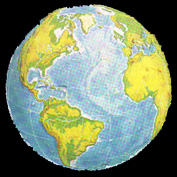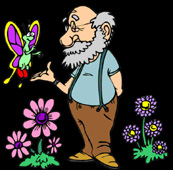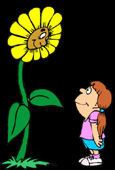THEME : LEARNING ABOUT THE WORLD AROUND US
UNIT 7 : SOIL
WHAT IS SOIL?

| But what does soil do? | ||||
| Soil is extremely useful. | ||||
| Soil enables plants to grow. |  | |||
Soil supports the plant in the ground. |  | |||
| Soil supplies the plant with nutrients and water. These are taken in by the roots. |  | |||
| Soil is home to millions of insects, termites and worms. |
| |||
Soil takes many many years to form and is made up of a mixture of different things.
1) Pieces of finely ground rock.
2) Humus (humus is made up of little bits of decayed leaves and tiny pieces of rotting wood, seeds and decayed plants and animals). This is rich in nutrients.
3) Water
4) Air
There are different layers of soil.
| THE TOP LAYER is the richest in NUTRIENTS as it contains the most HUMUS. This soil is usually dark in colour. |
| SECOND LAYER is called SUB SOIL and contains very little HUMUS. |
| SANDY SOIL | Is light and dry and because it contains large amounts of air water drains through easily. | |
| CLAY SOIL | Is very heavy and quite sticky when wet. Because it is so sticky and heavy, water does not drain though easily. | |
| GRAVELLY SOIL | Is full of tiny stones and because of this water drains away quickly | |
LAYERS OF SOIL

Top Soil: Plants grow in this part of the soil. It is made up of humus, which is decomposed organic matter, and also minerals.
Sub Soil: It has clay and minerals with water drips that it receives from above.
Patent Material: It has broken and crumbled rocks. Pants cannot grow here and there isn't much organic matter.
Lesson 2 : The Flow of Water through Soil
Water flows differently through different types of soil.It flows very well through some types of soil but not so through others. This is a test to compare how well water flows through sand, clay and garden soil.
Aim : To design a fair test to compare how well water flows through sand,clay and garden soil.Lesson 2 : The Flow of Water through Soil
Water flows differently through different types of soil.It flows very well through some types of soil but not so through others. This is a test to compare how well water flows through sand, clay and garden soil.
You will need:
- three types of soil - sandy soil, clay soil and garden soil
- three paper cups and three glasses
- three beakers of water
- a stopwatch
- nails
1. Discuss in groups how you would carry out the test.
2. Carry out the test and record your observations.
3. Which soil lets more water flow through in 3 minutes?
Which soil does not let water flow through easily?
4. Write your conclusion in your Science Journal.
Conclusion
Sandy soil lets water flow through very well.
Garden soil does not water flow through very well.
Clay soil does not let water flow through easily.
Plants need water and air to grow. They absorb water from the soil.Garden soil is good for the plants. It contains enough water. These vegetables are suitable to be planted in garden soil.
Different Plants for Different Soils
Soil is generally described by the amount of sand, clay, and silt it contains. This is known as texture. Soil texture is directly related to nutrient quality and drainage capabilities.
Sandy Soil
Sand is the largest particle in soil and does not hold nutrients well. The following plants are well-adapted to sandy soil.
- Blanket Flower
- Adam's Needle
- Wormwood
- Aster
- Echinacea
- Carrot
Clay Soil
Soil with a large amount of clay are heavy and do not drain well. The following plants are well-adapted to clay soil.
- Aster
- Bee Balm
- Butterfly weed
- Black-eyed Susan
- Goldenrod
- Hollyhock
- Geranium
| Goldenrod |
| Geranium |
Silt Soil
Silty soil is powdery with high fertility. Unfortunately, soils that are high in silt can become waterlogged very easily. The following plants are well-adapted to silty soil.
- Swamp milkweed
- Yellow iris
- Japanese iris
| Swamp milkweed |
| Japanese iris |
Plants need water and air to grow. They absorb water from the soil.Garden soil is good for the plants. It contains enough water. These vegetables are suitable to be planted in garden soil.
| Cabbage |
| Tomato |
Clay soil does not let water flow through easily. It contains too much water. Many plants cannot grow in it. Vegetables that are suitable to be planted in this kind of soil are yam, lotus and others.
Sandy soil cannot hold water. it lets water flow through, but does not contain enough water for plants to grow in.Vegetables that are suitable to be grown in this kind of soil are carrot, parsnips, pumpkin, cauliflower and others.
 |
| Yam plant |
| Lotus root |
| Pumpkin |
| Onion plant |








2 comments:
I like this blog design.
some of the words are too small font should be bigger
Post a Comment